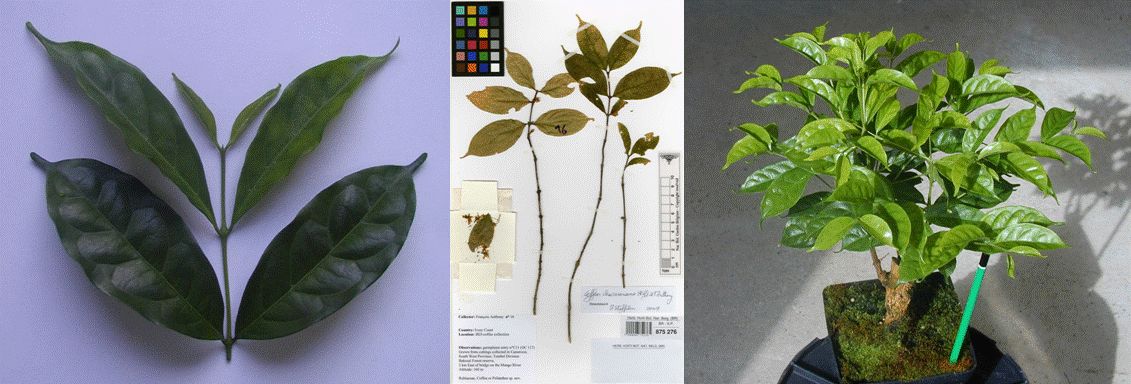Part 1 and Part 2
How were the Top 10 chosen?
An international committee of experts, chaired by Janine N. Caira of the University of Connecticut, selected the top 10 new species for this year's list. Nominations were invited through the species.asu.edu Web site and also generated by institute staff and committee members.
The Caira committee had complete freedom in making its choices and developing its own criteria, from unique attributes or surprising facts about the species to peculiar names.
This year's committee members included Philippe Bouchet, French National Museum of Natural History and International Commission on Zoological Nomenclature; Daphne G. Fautin, Natural History Museum and Biodiversity Research Center, University of Kansas; Mary Liz Jameson, Wichita State University; Peter Kämpfer, International Journal of Systematic and Evolutionary Microbiology, and Institut für Angewandte Mikrobiologie, Justus-Liebig-Universität Giessen; Niels Peder Kristensen, Zoologisk Museum, University of Copenhagen, Denmark; James Macklin, Harvard University Herbaria; Ellinor Michel, International Commission on Zoological Nomenclature and Department of Zoology, The Natural History Museum, London; John Noyes, Department of Entomology, Natural History Museum, London; Alan Paton, Royal Botanic Gardens, Kew, UK; Andrew Polaszek, Department of Entomology, Natural History Museum, London; Adam Slipinski, Commonwealth Scientific and Industrial Research Organisation (CSIRO), Australia; Gideon F. Smith, South African National Biodiversity Institute; and Zhi-Qiang Zhang, New Zealand Arthropod Collection, Landcare Research.
#3 Materpiscis attenboroughi - Devonian Delivery

Photos courtesy of John A. Long
Name: Materpiscis attenboroughi
Common Name: Mother FishFamily: Ptyctodontidae
How it made the Top 10: This new species is the oldest known vertebrate to be viviparous (live bearing). The fossilized specimen is an extremely rare find, showing a mother fish giving birth approximately 380 million years ago. The holotype specimen has been nicknamed "Josie" in honor of John Long's mother, who recently passed away.
Reference: Long, J.A., K. Trinajstic, G.C. Young&T. Senden. 2008. Live birth in the Devonian period. Nature 453(7195): 650–652.
Type material: "WAM 07.12.1 (Western Australian Museum, Perth)."
Type locality: "From the Stromatoporoid camp locality, Gogo Station, near Fitzroy Crossing, Western Australia (Late Devonian, early Frasnian)."
Etymology: "Generic name from the Latin meaning ‘mother fish’; species name in honour of Sir David Attenborough, who first drew attention to the Gogo fish sites in his 1979 series Life on Earth."
#2 Coffea charrieriana - No Jump in these Beans
Color photos of live plant by François Anthony; photo of preserved specimen courtesy of Piet StoffelenName: Coffea charrieriana
Common Name: Charrier Coffee
Family: Rubiaceae
How it made the Top 10: This is a new caffeine-free coffee from Cameroon, the first record of a caffeine-free species from Central Africa. Cameroon is a center of diversity for the genus Coffea and such wild species are potentially important in breeding programs. In this case the new species could be used for breeding of naturally decaffeinated beans.
Reference: Stoffelen, P., M. Noirot, E. Couturon&F. Anthony. 2008. A new caffeine-free coffee from Cameroon. Botanical Journal of the Linnean Society 158: 67-72.
Type Material: "Anthony 17 (BR!, holotype; specimen with bar-code BR-S.P. 000000872411), collected in 1997, Man-IRD coffee collection, Ivory Coast. Grown from cuttings collected from Cameroon, South-West Prov., Tombel Division, Bakossi Forest Reserve, 2 km east of bridge on the Mungo River, N4°44′ E9°35′, altitude 160 m, 14 February 1983."
Type Locality: Bakossi Forest Reserve, Tombel Division, Southwest Province, Cameroon.
Etymology: "The name is in honour of a Professor A. Charrier, who managed coffee breeding research and collecting missions at IRD during the last 30 years of the 20th century."

Image by Erik Holsinger
Name: Microbacterium hatanonis
Common Name: None
Family: Microbacteriaceae
How it made the Top 10: Surprisinigly, this new species of extremophile bacteria was discovered in hairspray.
Reference: Bakir, M.A., T. Kudo&Y. Benno. 2008. Microbacterium hatanonis sp. nov., isolated as a contaminant of hairspray. International Journal of Systematic and Evolutionary Microbiology 58: 654-658.
Type Material: "The type strain, FCC-01T (=JCM 14558T =DSM 19179T), was isolated from hairspray."
Type Locality: None specified
Etymology: This new species is named in honor of Dr Kazunori Hatano, "for his contribution to the understanding of the genus Microbacterium."







Comments